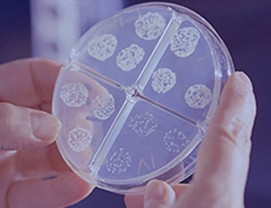Exploring Advanced Testing Methodologies for Aerosolized Antimicrobial Efficacy Studies
Sep 25, 2024
Introduction
In the fields of air quality and sanitation, developing and validating antimicrobial treatment processes is crucial for ensuring the public's safety in indoor environments. Government agencies, such as the United States Environmental Protection Agency (EPA), highly regulate these antimicrobial technologies. This blog explores the sophisticated testing methodologies employed by Aerosol Research and Engineering Laboratories to evaluate the efficacy of an aerosolized antimicrobial treatment technology and the guidelines set forth by the EPA.
Study Purpose
The main objective of this study was to rigorously test, under controlled laboratory conditions, the efficacy of an antimicrobial air treatment technology in neutralizing a wide range of aerosolized microorganisms. This testing provides valuable insights into the potential applications of antimicrobial treatments in real-world settings.
Testing Methodology Overview
The methodology used in this study exemplifies the detailed and methodical approach required to assess an air treatment technology's performance accurately. This methodology is based on guidelines set forth by the EPA in various guidance documents, such as OCSPP 810 2500.
Testing Methodology Main Points
Test Chamber: Antimicrobial studies can utilize various test chamber sizes, ranging from 150 cubic liters to 30 cubic meters, available at ARE Labs to simulate various real-world scenarios. Before each test, the chamber is meticulously cleaned and prepped to prevent any cross-contamination. The test chamber environment can be set up to mimic the intended use environment to give the most accurate results.
Testing Methodology Main Points
Test Chamber: Antimicrobial studies can utilize various test chamber sizes, ranging from 150 cubic liters to 30 cubic meters, available at ARE Labs to simulate various real-world scenarios. Before each test, the chamber is meticulously cleaned and prepped to prevent any cross-contamination. The test chamber environment can be set up to mimic the intended use environment to give the most accurate results.
Test Organism and Antimicrobial Agent Dispersal: The test species is aerosolized into the chamber to create a measurable and controlled concentration of airborne microorganism particles.
Test Substance Dispersal: The antimicrobial agent is released into the test chamber using a dispersal device (nebulizer, diffuser, spray can), which can involve setting the dispersal to a predetermined schedule or a one-time dispersal. Particle and chemical sensors may be deployed to characterize the dispersal time or schedule necessary to achieve a desired concentration.
Neutralizer Verification: Neutralization verification tests confirm that the reduction of microorganisms is due to the technology's antimicrobial action and not the sampling process. These tests ensure the collection method does not inadvertently kill the test organism and bias the results.
Air Sample Collection: Air samples are collected at specific intervals using air samplers containing a verified neutralizing solution. The solution is specific to the aerosolized antimicrobial agent to immediately halt the antimicrobial activity, thus ensuring that the reduction results reflect the amount of microbial inactivation occurring in the air, not after sampling.
LOG vs. Net LOG Reduction Graph
Key Considerations in Aerosolized Antimicrobial Testing
Aerosol Stability and Homogeneity: Consistent results require ensuring the aerosol remains stable and homogeneous throughout the testing.
Environmental Control: Temperature and humidity were rigorously controlled and monitored, as variations can significantly affect the behavior of aerosols and the efficacy of antimicrobial agents.
Data Integrity and Protocol Compliance: Adherence to Good Laboratory Practice (GLP) standards is essential for the validity of the testing procedures and the reliability of the results.
Conclusion
The studies conducted by Aerosol Research and Engineering Laboratories represent a gold standard in testing methodologies for evaluating the efficacy of aerosolized antimicrobials. By employing a systematic and highly controlled approach, the testing ensures that the results are both reliable and replicable, providing crucial data for the further development and deployment of antimicrobial air treatments.
This blog post aims to shed light on the intricate processes behind the scenes of aerosolized antimicrobial efficacy testing, emphasizing the meticulous attention to detail required to assess these technologies accurately.





